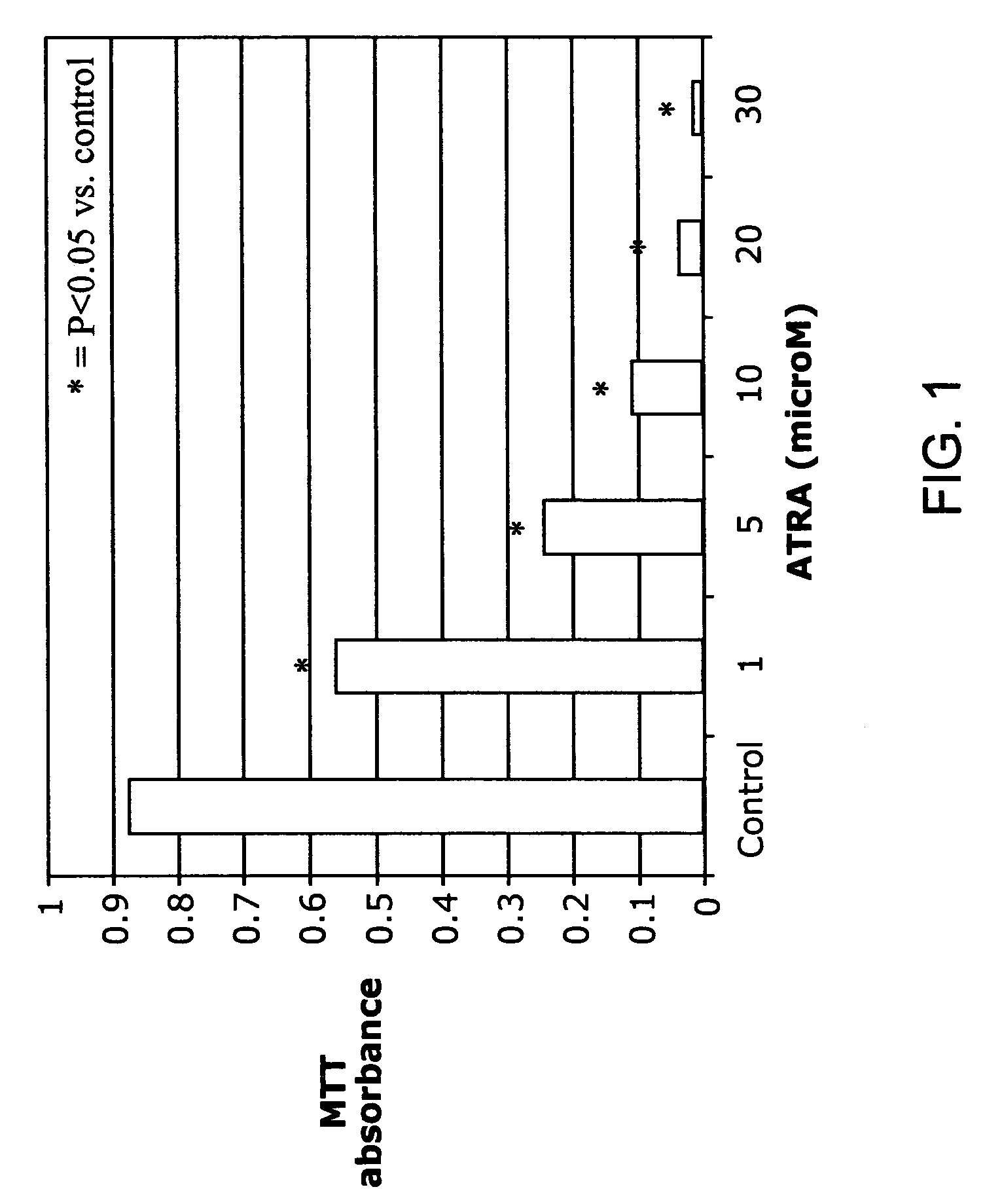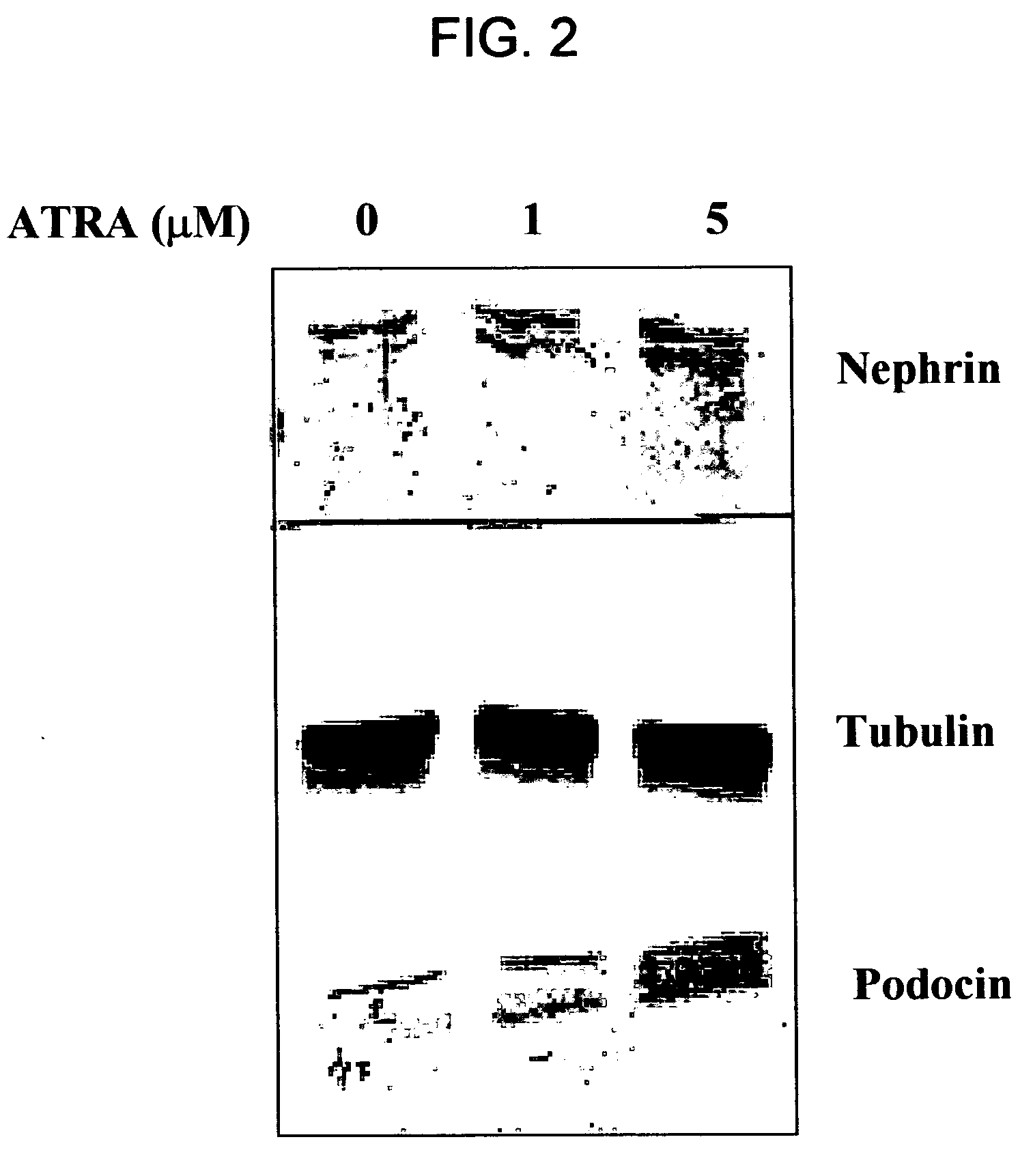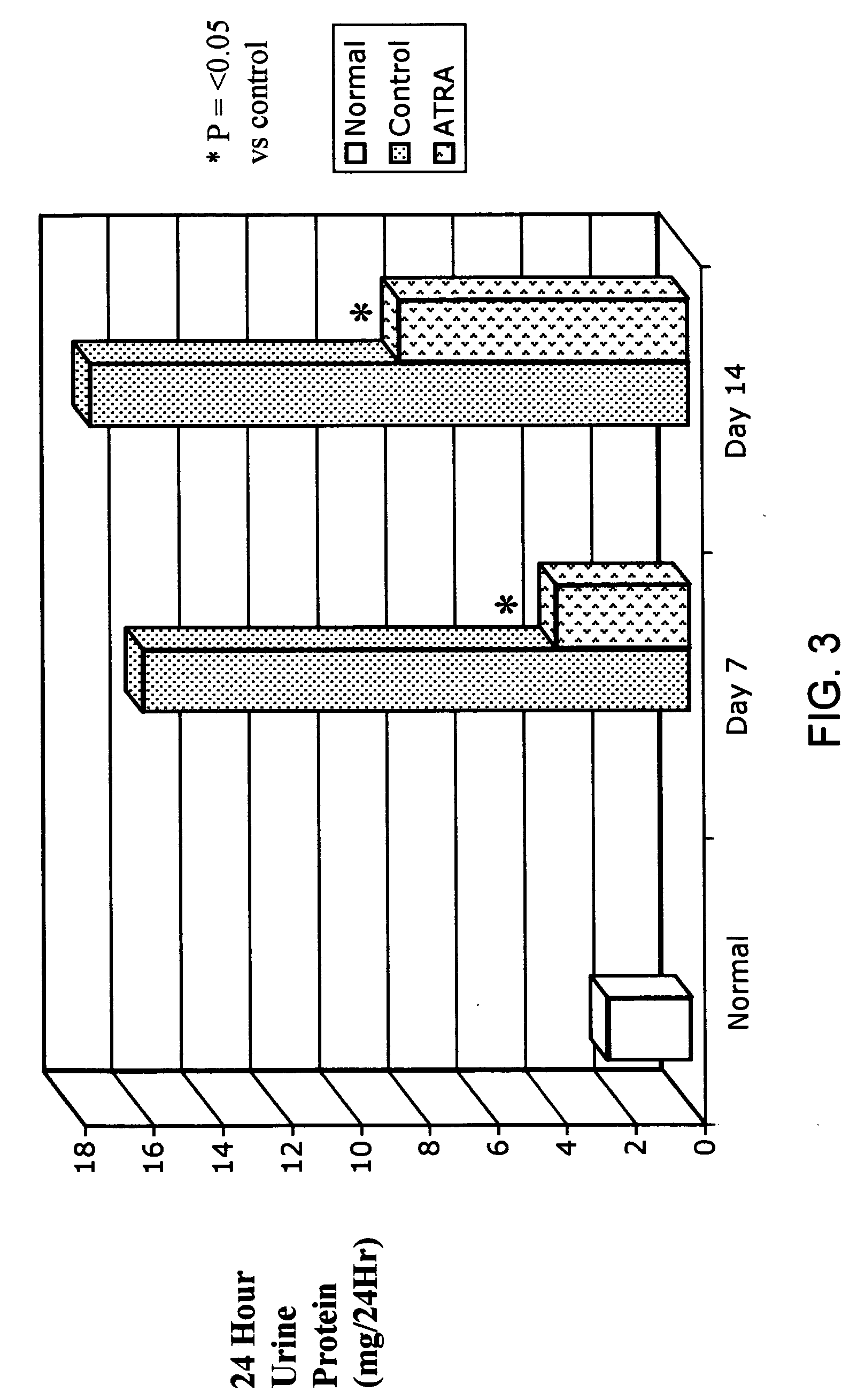Methods of treating proteinuria
a proteinuria and protein technology, applied in the field of proteinuria treatment, can solve the problems of nephrotic range proteinuria prevalence, protein in urine and progressive kidney disease, and difficult to determine the prevalence of nephrotic range proteinuria
- Summary
- Abstract
- Description
- Claims
- Application Information
AI Technical Summary
Benefits of technology
Problems solved by technology
Method used
Image
Examples
example 1
ATRA Induces Podocyte Differentiation and Alters Nephrin and Podocin Expression In Vitro and In Vivo
Methods
Cell Culture of Rat and Mouse Podocytes
[0085] Rat Podocytes. Primary rat podocytes were phenotypically characterized using multiple podocyte specific markers, including WT-1 and synaptopodin. Rat podocytes were established in culture as previously described. Shankland et al. (1999) Kidney Int 56:538-548. In short, differential sieving was performed on isolated kidney cortex from male Sprague Dawley rats (Simonsen, Gikoy, Calif., USA) under sterile conditions. Glomeruli were collected on a sieve with 75 μm pores and placed onto culture dishes containing Vitrogen (Cohesion Technologies, Palo Alto, Calif., USA). Glomeruli were cultured in K-1 media consisting of Ham's F-12 and DME-low glucose 1:1 (Gibco, Grand Island, N.Y., USA) with 2% NuSerum (Collaborative Biomedical Products, Bedford Mass., USA) and Insulin, Transferrin and Selenium premix (Becton Dickson Labware, Bedford...
example 2
ATRA Improves HIV-Associated Nephropathy
Materials and Methods
In Vitro Studies
[0110] To test the hypothesis that ATRA altered the proliferative capacity of podocytes in HIV transgenic mice, conditionally immortalized podocytes harvested from transgenic HIV Tg-26 (Tg) and conditionally immortalized podocytes from transgene free or wild-type podocytes (controls) were compared in a series of studies. Both transgenic and wild-type cell lines were initially plated in “growth permissive” conditions (33° C.) and grown in 10 ml of “standard media,” consisting of 90% RPMI 1640 (Invitrogen, Grand Island, N.Y.), 10% fetal bovine serum (Hyclone, Logan, Utah), 1% L-glutamine (Irvine Scientific, Santa Ana, Calif.), 1% pen-strep (Biosource, Rockville, Md.), 1% sodium bicarbonate (Sigma-Aldrich, St Louis, Mo.) and 1% HEPES buffer (Sigma-Aldrich, Santa, Ana, Calif.), and 1% sodium pyruvate (Irvine Scientific, Santa Ana, Calif.). For growth promotion, 5 μl of mouse gamma interferon ...
PUM
| Property | Measurement | Unit |
|---|---|---|
| thick | aaaaa | aaaaa |
| molecular weight | aaaaa | aaaaa |
| time period | aaaaa | aaaaa |
Abstract
Description
Claims
Application Information
 Login to View More
Login to View More - R&D
- Intellectual Property
- Life Sciences
- Materials
- Tech Scout
- Unparalleled Data Quality
- Higher Quality Content
- 60% Fewer Hallucinations
Browse by: Latest US Patents, China's latest patents, Technical Efficacy Thesaurus, Application Domain, Technology Topic, Popular Technical Reports.
© 2025 PatSnap. All rights reserved.Legal|Privacy policy|Modern Slavery Act Transparency Statement|Sitemap|About US| Contact US: help@patsnap.com



